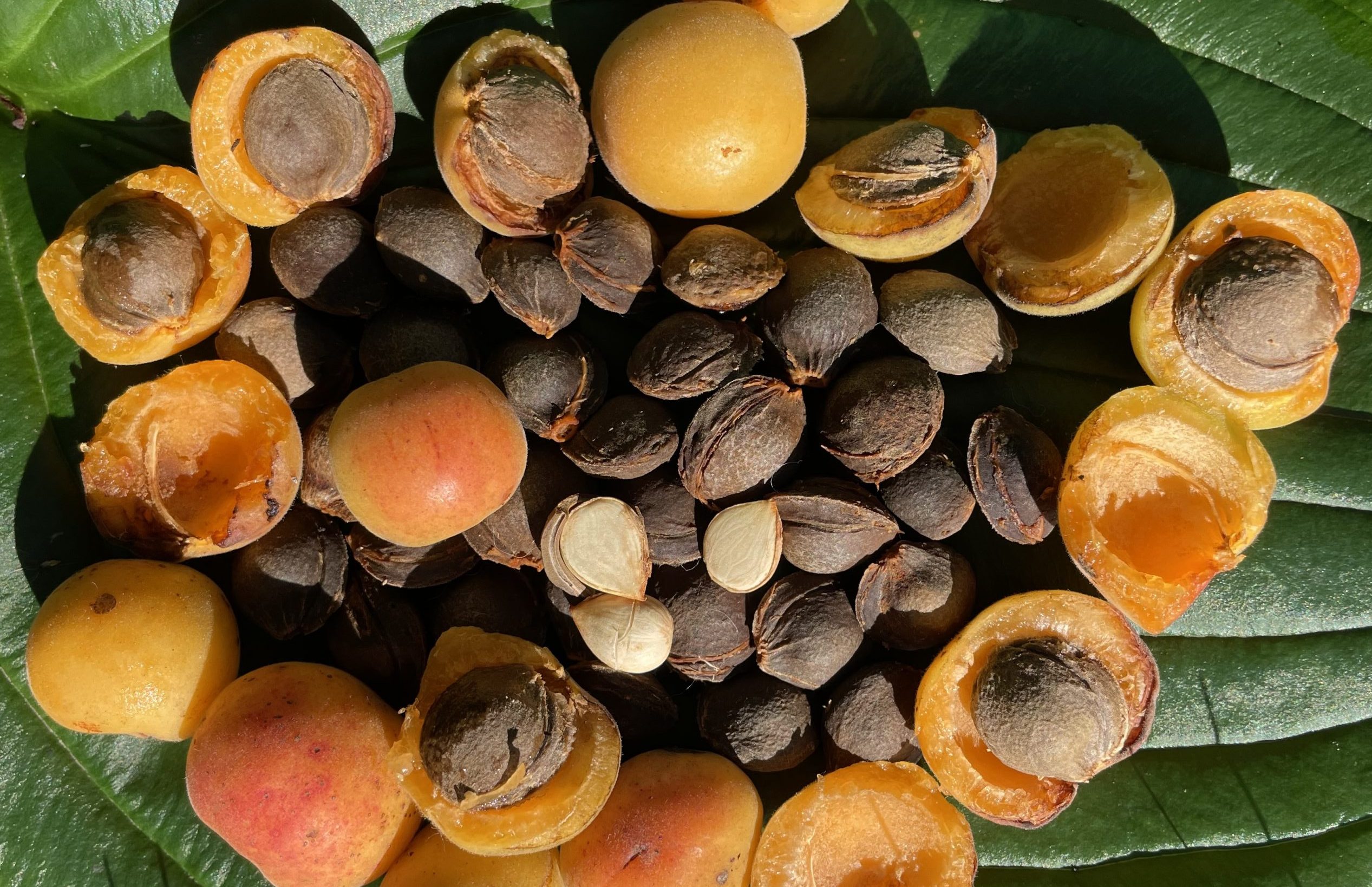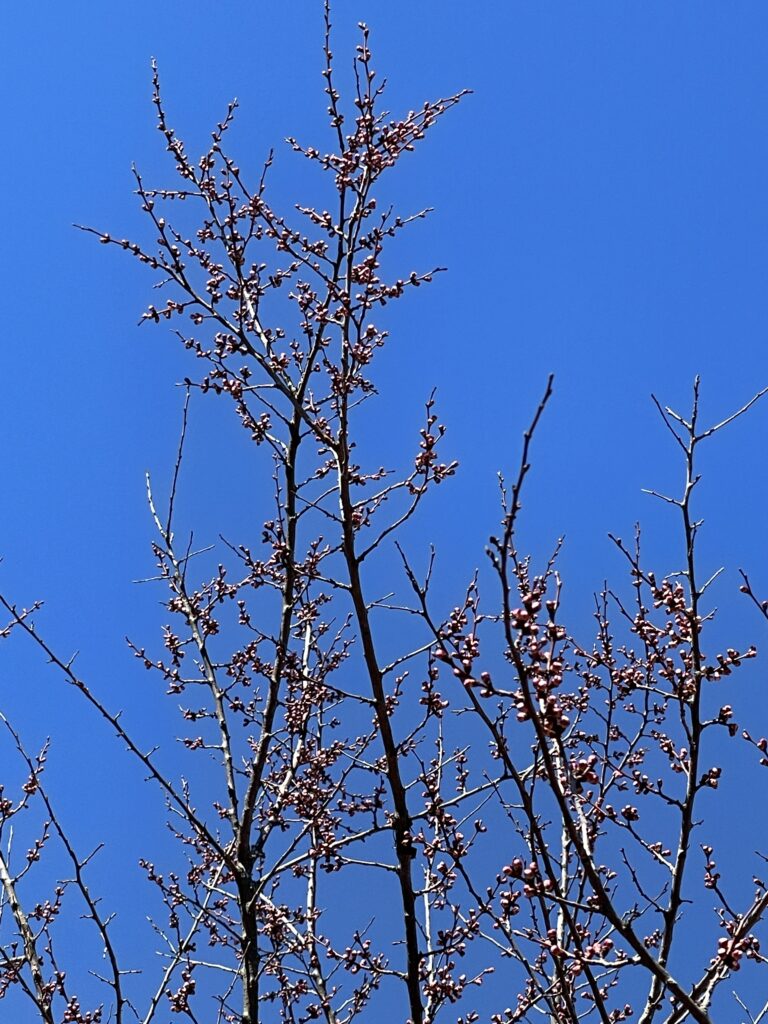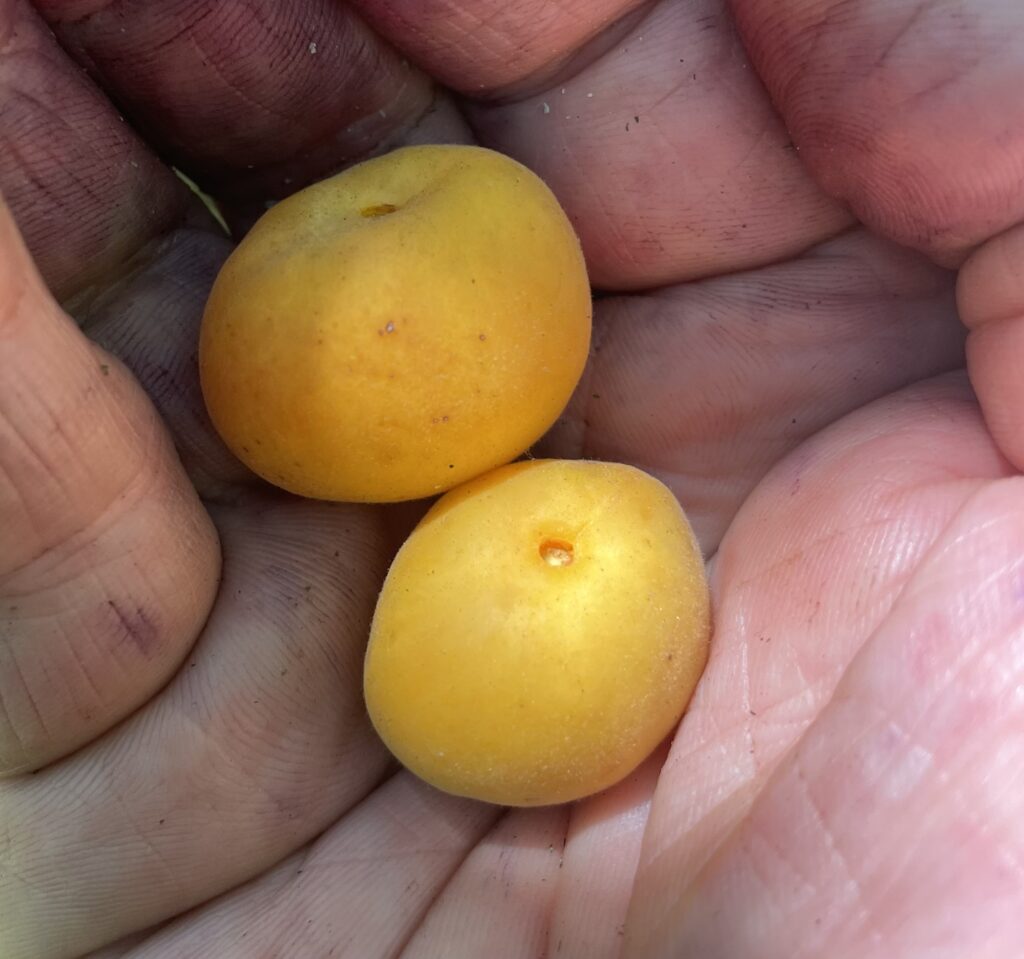Experience-Seeds-Knowledge-Plant Discoveries-Ecological Enrichment-Join Now Click Here!


For the Love of Apricots

For me it is impossible not to check out the apricots in the produce section of my local grocery store. I know they are from California. I know that the flavor is iffy and not tree ripened. I still have to try. Several times I have ordered the organic Frog Hollow Farm apricots from California. I splurged. Yet when I mention I want to grow apricots at my farm in southwestern Michigan, many people will tell me it is pointless and there is only one tiny area in Berrien County that it can be done. Everyone goes negative Nancy on me wanting to grow apricots. Wah.wah… Yet a quick glance at my farmers market does say otherwise. There might be a few farms in next door Van Buren County all moderated by Lake Michigan. If it freezes over to some degree there is a blanket of security in this giant water and ice mass. There is a possibility geographically to consider other areas. The Great Lakes can smooth out the variations of the spring weather. At the market, I always try to talk to the farmer about his apricots if possible. Harlayne is a popular variety. At one time in Michigan, apricots were found here in many diverse climates in southern and central Michigan and a few types even into northern Michigan. It turns out we have very good apricot soil. Think of sand, on a hilly topography with low organic matter as the perfect apricot soil and location. My farm fits this description as well as having the steep hills for frost drainage. There are several varieties of apricots that originated or developed from heirloom seeds. Goldcot is one of them still in use today.
I once met Robert Kurle, one of the founding members of the North American Fruit Explorers and a strong apricot enthusiast from Chicago. He had a large collection of many varieties all multi-grafted into seedling trees. He released a long report of the performance of these apricot varieties focusing mostly on flavor and potential for the home orchardist. He thought the apricot was ruined by commercialization. That report was legendary at the time because it relied on something missing from all apricot discoveries and published literature: personal experience. You have to ask yourself what is a good apricot flavor and when is a good time to pick that fruit. You then ask yourself how it compares to similar varieties and if it is easy to grow or disease prone. A few years later I met a scientist who worked for a drug company in animal health whose intern years worked in the legendary breeding trials of Canadian apricots from Harrow while at Cornell. He told me they got it to work, but commercially it was not competitive compared to the California fruit. Even the the frost issue using later and later flowering cultivars was solved to some extent.
It is not for lack of trying that there are few apricot orchards anywhere today. Although you will see some nice trees here and there, it is rare. The fruit does has limitations and so does the tree’s inherent physiology. The market is not kind to those who actually improve the apricot in the flavor department too. You have a rather fragile lump of delicious goodness hard to ship. So adding another variety or species to the list is not necessarily helpful except to those who want to experiment or have one of these rare microclimates where apricots can flourish. But it is these same limitations that spark the imagination of growers world wide wanting to cultivate this fruit and make it possible to have apricots as reliable as apples. You can see the wheels turning now. Yes. How do I got those pits? What about these new varieties? Each new variety is a possibility outside of its California home.

Next week I am anticipating a week of solid below freezing temperatures. As you can see the apricots are in almost in bloom and ready to explode. It is this early tendency that people try to figure out ways around this natural tendency. One person told me he uses frozen gallons of water in milk jugs under his trees. Another person says I should plant on a north facing slope or on the north side of a home. Another says I should plant a late flowering variety. From what I have gone through, none of these methods work to any large degree. Besides parking an iceberg under your apricot trees, apricots do flower early. That is their thing. I will post the results of my apricot flowering times this year because it is the perfect example of bad apricot weather. The good part about the weather is the huge amount of work I got done in my plantings without freezing or getting nailed by spring rains. There is plenty of sunshine too. All of this is lovely yet what about the apricots? How will that affect my apricot trees and their precious fruit? I will soon know the results.
My explorations into apricots has led to a number of interesting discoveries not normally thought of in an apricot sort of way. The amazing number of pollinators on the trees is off the charts. It is a giant cloud of buzzing around the trees which you can easily see fifty feet away. I hope to explore this further. Each year there are different and new pollinators. I would say the most prolific pollinators are the hoover flies and the second is bumblebees. If the air temperatures are warm even the honeybee makes an appearance. I love honeybees as much as I love apricots. The period of time from flowering to fruit set has to be short. You can’t be lollygagging around in full flower. It has to be shorter than the other varieties reducing the chance of frost damage. But even if the fruit is set, the question remains how low can you go? In one season about 15 years ago, it hit 17F after a successful fruit set. The fruits were roughly the size of a pea. That dropped the fruit. In general, having some frost days after fruit set is not a big deal but more knowledge is needed on this effect of fruit and frost.
Another aspect of growing pome fruits is getting a good return bloom. I discovered the last couple of years that raking the ground underneath them and then applying pelletized chicken manure with calcium was a great benefit for the trees. This improved overall vigor of the trees and increased flowers. Now if only I can get an iceberg to drop by. Careful what you ask for. Here comes that polar vortex again. The record setting temperatures are the perfect time to learn the most about the apricot.

Short flowering times, increased nutrition, finding new characteristics and using different species can help the apricot. Even the wood and pits have potential uses. Some apricots have timber like growth habits making it likely to get a saw log. When fruit production decreases, the saw logs can then pay for the future orchard as well as improve the finances of the orchard owner. If we can get rid of the poor rootstock choices that are suitable for California but not Michigan and root the plant instead we could have long lived apricot trees making it even more profitable long term. Some orchardists told me 15-20 years is the top range of grafted trees before the borers move in on the weak trees. We can easily expand the range of the apricot and bring it to a wider range of climates and locations. It will take more personal experiences and eventually more fruiting orchards in places not thought of as prime apricot land. Michigan is not Pakistan with thousands of families growing apricots nestled in the Himalayan mountains. Just moving the fruit or breeding is not enough. We could be a major apricot producer even in Michigan’s upper peninsula. The yields here are off the charts comparable to peaches. It would be ideal to do large seedling plantings in marginal farmland in Michigan. The Briana apricot represents a new species not in cultivation with potential as an oil crop as well as a from direct from seed apricot fruiting tree with dual purpose. Mention growing anything from seed and now you are in this la-la land of fruit growing and one in a million moon shot possibility. It turns out the apricot is not the apple. It can be surprisingly uniform in its wild state as well as retaining its ability to adapt to its new location. This only increases with generational growing and selecting. It is the apricots response to humans cultivating it. The apricot changes for us as a way to say thank you. This is an ideal tree crop. Imagine if there were wild apricots with both pits and fruits harvested. It becomes the fruit and nut tree all at once.

This year is a fantastic test year to yet learn again what the apricot is capable of and how we can harness the power of this wonderful fruit that is so easy to fall in love with.